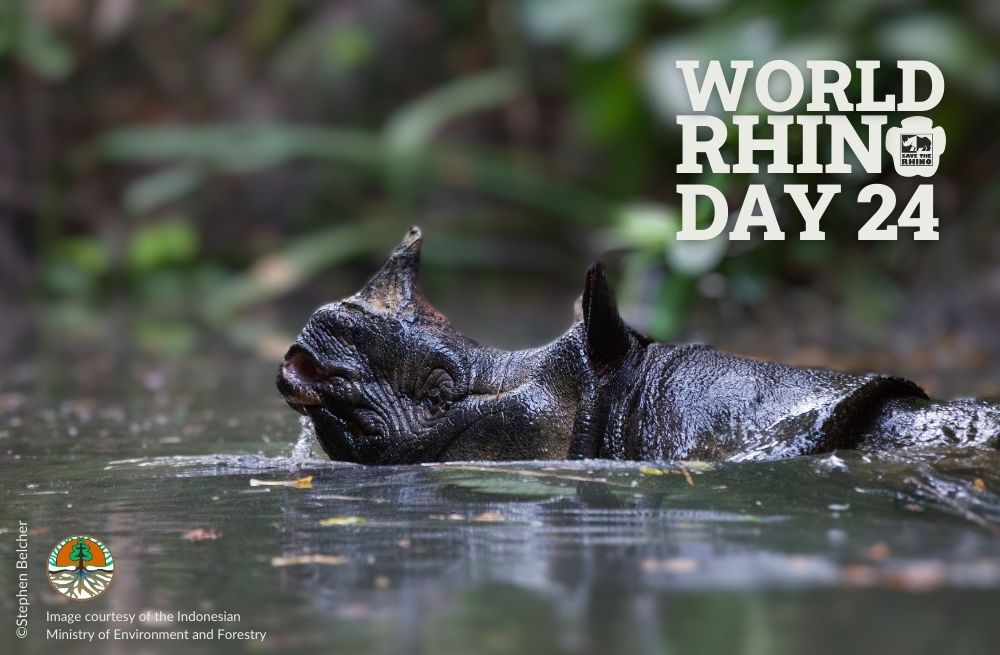World
World Rhino Day 2024 | Collaboration is Key | Save the Rhino

On World Rhino Day 2024, we’re reflecting on the successes and challenges facing the five rhino species around the world.
Our CEO, Dr Jo Shaw, shared,
“Rhinos are important barometers for nature. Their future is at risk due to two of the greatest threats to biodiversity – illegal wildlife trade and habitat loss. Despite these ever present dangers, conservationists have proven over decades that we can recover rhino species from very low numbers.
The two most threatened rhino species currently total less than 100 individuals. We must use lessons learned about holistic solutions bringing together protection, biological recovery and the power of partnerships to prevent their extinction – we believe it can be done, if we all work together.”
In May 2024, an Indonesian police investigation revealed that 26 Javan rhinos had been illegally killed in Ujung Kulon National Park between 2019 and 2023. This devastating news meant that approximately one-third of the last population of this species had been lost.
Two men have been successfully prosecuted and sentenced for their roles in illegally killing these rhinos and trafficking their horns, receiving sentences of 12 years and 4.5 years in jail respectively. Police confirmed intermediaries had links to two Chinese nationals as potential buyers of the illegal horn.
Authorities are investigating alarming links between the poaching syndicate around Ujung Kulon and a man in Sumatra arrested in August 2024 for allegedly attempting to sell eight rhino horns. Four of the horns have been determined to be from Indonesian rhinos, the others are suspected to have been trafficked from elsewhere, raising concerns about the linkage to transnational wildlife crime syndicates. The total Sumatran rhino population estimated as few as 34-47 animals and fragmented across three different regions of Indonesia.
Despite these threats, there is some good news. According to the Government of Indonesia, at least four new Javan rhino calves have been recorded in the past 12 months, providing some hope for recovery.
The situation for the Greater one-horned rhino is more positive. The species continued its recovery from very low numbers to a population of around 4,018 in India and Nepal by the end of 2023, thanks to ongoing conservation efforts to support their habitat and protection.
Across Africa, black rhino numbers, which have shown a sustained recovery over the last three decades from their lowest point of 2,354 in 1995 to 6,487 at the end of 2022, showed a slight decline to 6,421 by the end of 2023. This change is largely due to targeted poaching in Hluhluwe iMfolozi Park in South Africa and Etosha National Park in Namibia. Active dehorning operations are underway in both parks to reduce the pressure on these important populations.
Overall, the loss of African rhinos to poaching increased during 2023 to 586, from the 551 killed in 2022. Use of best practise interventions to disrupt organised crime, such as financial investigations, and strong sentencing of wildlife criminals are essential to stop these syndicates.
Building on positive news of their recovery last year, white rhino numbers continued to rise across the continent, reaching 17,464 at the end of 2023 (up from 16,803). As a result, there were an estimated 23,885 black and white rhinos combined in Africa at the end of 2023, an increase of 2.4%.
We are committed to working alongside our partners in Africa and Asia to support the future of all rhino species. Together, with our partners and passionate community around the world, we remain dedicated to reaching our vision: all five rhino species thriving in the wild.










